
Review on 💧 API TAP Water Conditioner: Safely Neutralize Chlorine, Chloramines & Chemicals | Highly Concentrated Fish Tank Water Treatment by Jamie Vanderburg

Best value for tap water treatment
I love all API products, especially their easy to use test kits. This product is great too. Regardless of the size of tap water conditioner you buy, these are the most reputable brands that will process all of the tap water for your pond or aquarium. It only takes 3 drops per gallon you add to your tank. It removes chlorine, neutralizes chloramines and helps detoxify heavy metals in tap water. Some more expensive products also contain substances that help fish maintain a protective layer of mucus (and treat male pattern baldness and possibly ED). If your fish are healthy and your aquarium water parameters are maintained with weekly water changes and good filtration, these other ingredients are useless. ("Special sauce" is just ketchup, mayonnaise, and condiments.) If your fish has ulcers or other health problems, find the cause, fix it, and treat it with something other than tap water conditioner if necessary. The API directions for tap water treatment first state the amount of product needed to remove chlorine, then in smaller type below that 2 to 3 times more should be used to also neutralize the more toxic chloramines produced during the Purification of your water can be added. . I don't know why the companies that make these products aren't honest and say to use more and then say in the fine print that if you want to save money and risk your health you can save and use less. your fish. If you have been certified by your local water authority not to use chloramines during the water or water treatment, only one drop per gallon is required to remove the chlorine. I didn't bother to call the county water board because I couldn't confirm that the person who answered the call was aware of chlorine, chloramine, or chloroform. from your own intestines or a hole in the ground. Even if you have personally spoken to someone who can tell you with absolute certainty that chloramines are not being used, they will not write to you if this changes in the future. Unless you're the person responsible for this water treatment step in your area, the only way to know for sure if your water is safe for your fish with just one drop per gallon is to use a drop and then test the water for any detectable ammonia, which is treated water. Chloramines contain small amounts of ammonia. Then you know what you can safely add to the aquarium without causing irritation and inflammation of the gill tissue. It's much safer to only add 3 drops per gallon. Nothing else hurts, but it's just wasted. To top up my tanks I keep a few 5 gallon plastic bottles that were used for filtered/spring water. After I've filled my tanks, I add tap water to the pitcher, refill and leave it there until I need it. This gives the conditioner time to fully develop its heavy metal protective ingredients. It also allows the water to reach room temperature since 5 gallons of ice cold tap water in winter can cause the temperature in a 55 gallon tank to drop. Perhaps more importantly, the plumbing in many places is old and often in need of repair or expansion. When a plumbing repair is done they sometimes add an additional chlorine based sanitizer at the repair site to ensure that any bacteria that may have entered the plumbing network is killed and cannot grow and contaminate our drinking water. While I don't usually smell chlorine in tap water, I sometimes notice that it smells more like pool water than tap water. If your tap water contains more chlorine than usual, more neutralizer is needed. Most chlorine will evaporate on its own if tap water is left open for 24 hours, but chloramine will not. When they disinfect a repair site, they usually only use chlorine. When I leave the water I will put it in my aquarium for at least a day, after that I'm sure it's always safe to put it in my aquarium. I've been asked by people in the past if they can add air conditioning to an aquarium and then use a water hose to fill up their tank. I don't usually recommend this because many of our fish have a habit of going to the part of the tank we are standing in and adding water, thinking food will be added soon. If you put the conditioner in the tank water first instead of the tap water, it will take some time for the tap water from the hose to react with the conditioner. Temporary, short-term doses of chlorine won't kill your fish, but they won't do them any good over time either. If you don't have a potable water-certified hose, harmful chemicals can get into the water you put in the tank. If you're using a regular garden hose to fill the tank after a water change, you should run water through it for at least a few minutes to make sure whatever's left in the hose is flushed out.
- Hands-free operation
- It doesn't all work out
New products
Comments (0)
Top products in 🌊 Aquarium Water Treatments
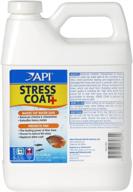
🐠 API Stress Coat Water Conditioner | Tap Water Safe, Repairs Fish's Protective Coat, Use for Water Changes, Adding Fish, and Injuries

9 Review
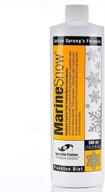
🐟 Two Little Fishies Marine Snow ATLMSPD4, 16.9 oz

10 Review

12 Count Greenpro Root Tabs Fertilizer Tablets: Ideal For Aquariums, Ponds & Water Gardens!

26 Review

ACCU-CLEAR Water Clarifier for Freshwater Aquariums - Quickly Clears Cloudy Water, Ideal for Weekly Use

9 Review
Another interesting products

Vacuum cleaner TEQQO Aquastick 3 in 1 Power, grey/turquoise

26 Review
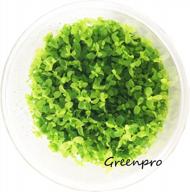
Greenpro Micranthemum Monte Carlo: Live Large Pearl Grass Aquatic Plant In Tissue Culture Cup For Freshwater Fish Tanks And Aquariums

49 Review
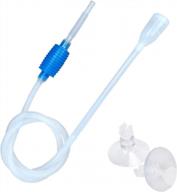
🐠 U-BCOO Aquarium Gravel Cleaner Fish Tank: Manual Siphon for Efficient Filter Gravel Cleaning and Water Change in Tanks

22 Review
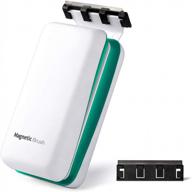
Efficient 2-In-1 Magnetic Fish Tank Cleaner With Non-Slip Design And Scratch-Free Blades

37 Review

